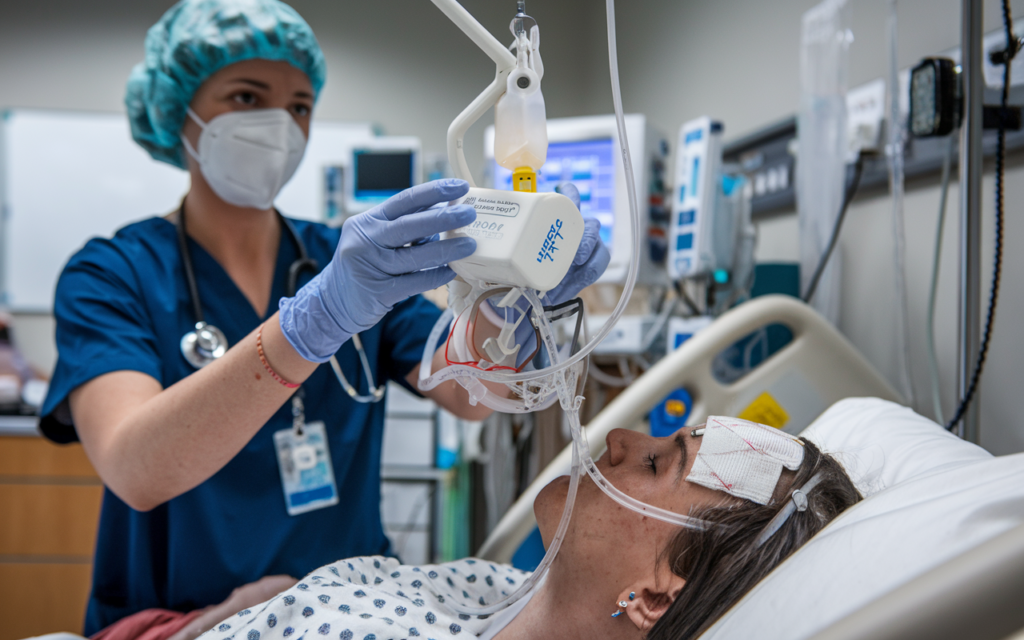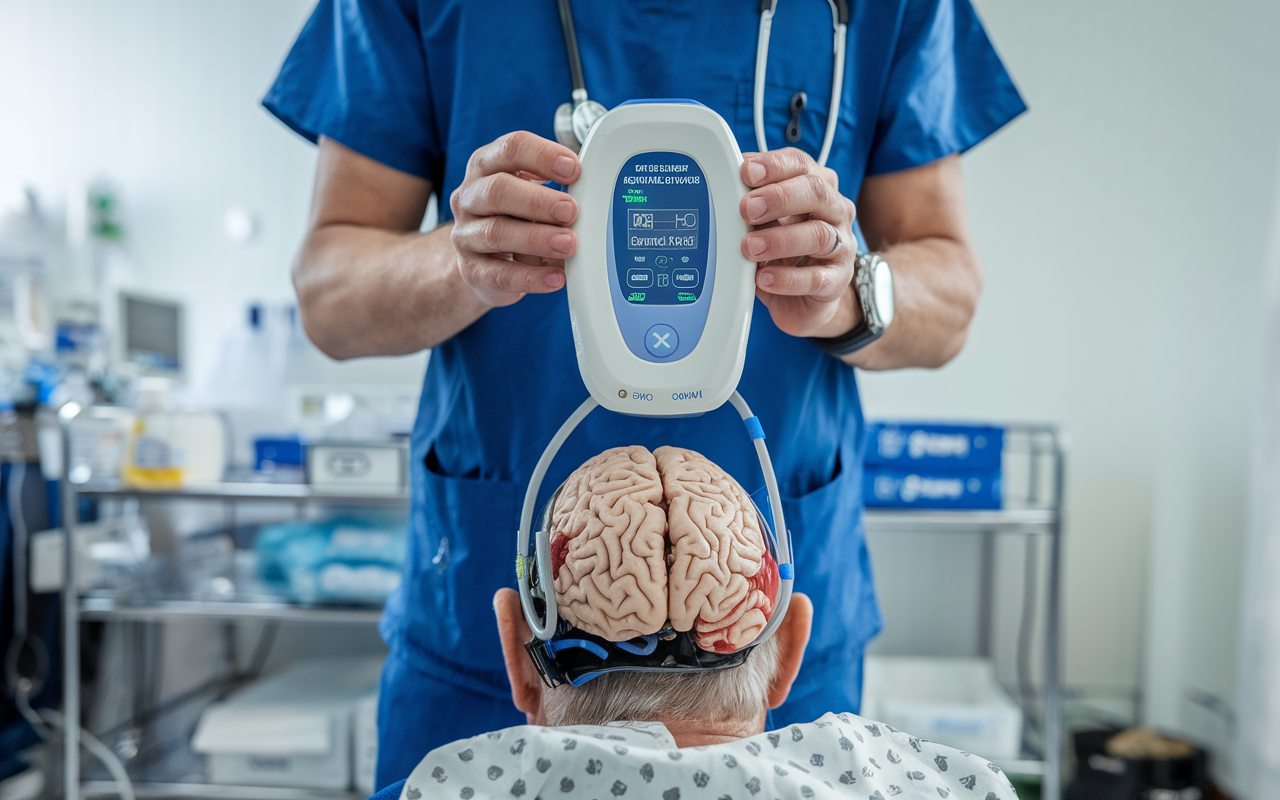Introduction
Long-Term Acute Care (LTAC) facilities are specialized healthcare settings designed to provide intensive medical treatment for patients with complex medical conditions, including severe neurological disorders. Among the critical tools used in these facilities, External Ventricular Drainage (EVD) devices play a pivotal role in managing intracranial pressure (ICP) and cerebrospinal fluid (CSF) dynamics in patients with conditions such as traumatic brain injury (TBI), hydrocephalus, and intracranial hemorrhages. This article explores the significance of EVD devices in LTAC settings, their technological advancements, clinical applications, management protocols, and future directions in neurocritical care.

Importance of Evd Device ltac Facility in Neurological Care
EVD devices are surgically implanted catheters that are inserted into the ventricles of the brain to drain excess CSF and monitor ICP. In LTAC facilities, where patients often require prolonged monitoring and treatment, these devices are essential for preventing secondary brain injury caused by elevated ICP. By regulating CSF levels, EVD devices ltac Facility help maintain cerebral perfusion pressure (CPP) within safe limits, thereby optimizing brain oxygenation and reducing the risk of further neurological damage. This capability is crucial in the management of patients recovering from severe brain trauma or undergoing neurosurgical procedures.
Technological Advancements in EVD Devices
Recent years have witnessed significant advancements in EVD device technology, enhancing their precision, safety, and ease of use in LTAC settings. Modern EVD devices are equipped with integrated pressure monitoring systems that provide real-time feedback on ICP levels, allowing healthcare providers to adjust drainage rates and treatment strategies promptly. Furthermore, advanced models feature closed-loop drainage systems, which minimize the risk of infections by maintaining a sterile environment around the catheter site and optimizing CSF drainage efficiency. These technological innovations not only improve patient outcomes but also streamline clinical workflows, enabling more efficient management of neurocritical care patients in LTAC facilities.
Clinical Applications and Patient Management
In clinical practice, the use of EVD devices in LTAC facilities involves meticulous patient monitoring and management by multidisciplinary healthcare teams. Neurocritical care specialists utilize EVD devices to tailor treatment plans based on individual patient responses and specific neurological conditions. Continuous monitoring of ICP allows healthcare providers to intervene early in case of fluctuations, ensuring timely adjustments to drainage rates and therapeutic interventions. Effective management of EVD devices also includes rigorous adherence to sterile insertion techniques, routine catheter maintenance, and vigilant monitoring for signs of infection or mechanical complications. These protocols are essential for optimizing patient safety and maximizing the efficacy of neurocritical care interventions in LTAC settings.

Challenges in EVD Device Management
Despite their benefits, managing EVD devices in LTAC facilities presents several challenges that healthcare providers must address. One significant challenge is the risk of catheter-related infections, which can lead to serious complications such as meningitis or ventriculitis. To mitigate this risk, strict aseptic techniques during device insertion and maintenance are crucial, along with regular monitoring for signs of infection and prompt initiation of appropriate antibiotic therapy when necessary. Mechanical complications, such as catheter occlusions or dislodgements, also require immediate attention to prevent interruptions in CSF drainage and potential increases in ICP. Ensuring comprehensive staff training and adherence to standardized protocols are essential in overcoming these challenges and maintaining high standards of care for patients relying on EVD devices in LTAC facilities.
Future Directions and Innovations
Looking ahead, ongoing research and development efforts are focused on further enhancing the functionality and safety of EVD devices in neurocritical care. Future innovations include the integration of advanced sensor technologies for continuous monitoring of biochemical markers in CSF, which could provide deeper insights into neurological status and facilitate personalized treatment strategies. Minimally invasive approaches to EVD placement and novel materials with enhanced biocompatibility are also areas of active exploration, aiming to reduce procedural risks and improve patient comfort during device use. Additionally, advancements in digital health technologies and data analytics hold promise for optimizing clinical decision-making processes and enhancing outcomes in neurocritical care settings. By harnessing these innovations, healthcare providers can continue to advance the field of neurosurgical and neurocritical care, ultimately improving the quality of life for patients recovering from severe neurological injuries or undergoing complex neurosurgical procedures in LTAC facilities.

Conclusion
In conclusion, EVD devices represent indispensable tools in the management of neurocritical care patients in LTAC facilities, providing essential support for monitoring and regulating intracranial pressure and CSF dynamics. Through continuous technological advancements and rigorous clinical practices, these devices enable healthcare providers to deliver personalized, effective care that improves outcomes and enhances patient safety. As research and innovation continue to drive progress in neurosurgical and neurocritical care, the future holds great promise for further improving the capabilities of EVD devices and expanding their applications in LTAC settings. By addressing current challenges and embracing future opportunities, healthcare providers can continue to elevate the standard of care for patients relying on EVD devices to recover from neurological injuries and disorders in LTAC facilities.
Read More: Entrenadora Fitness Marconfit
Frequently Asked Questions (FAQs) about EVD Devices in LTAC Facilities
Q1: What is an EVD device, and how does it work?
An EVD device, or External Ventricular Drainage device, is a specialized catheter system used to manage intracranial pressure (ICP) by draining excess cerebrospinal fluid (CSF) from the brain’s ventricles. It consists of a flexible catheter that is surgically inserted into the ventricular system of the brain and connected to an external drainage system. This setup allows healthcare providers to monitor and regulate CSF levels, thereby controlling ICP and optimizing brain perfusion.
Q2: In which medical conditions are EVD devices typically used in LTAC facilities?
EVD devices are commonly used in LTAC facilities to manage patients with severe neurological conditions such as traumatic brain injury (TBI), subarachnoid hemorrhages, hydrocephalus, and intracranial hemorrhages. These devices play a crucial role in providing therapeutic drainage of CSF, which is essential for alleviating elevated ICP and preventing secondary brain injury.
Q3: What are the risks associated with EVD device usage in LTAC settings?
While EVD devices are effective in managing ICP and CSF dynamics, they carry risks such as infections at the catheter insertion site (e.g., meningitis or ventriculitis), mechanical complications (e.g., catheter occlusion or dislodgement), and potential neurological complications related to prolonged device use. Healthcare providers in LTAC facilities mitigate these risks through rigorous adherence to sterile procedures, regular monitoring, and prompt intervention for any signs of complications.
Q4: How are EVD devices monitored and managed in LTAC facilities?
In LTAC facilities, EVD devices are monitored closely by neurocritical care teams. Continuous monitoring of ICP and CSF drainage rates allows healthcare providers to adjust treatment strategies based on real-time patient data. Management protocols include regular assessment of neurological status, routine checks for catheter function and integrity, and vigilant infection control measures to ensure patient safety and optimize treatment outcomes.
Q5: What are the latest advancements in EVD device technology?
Recent advancements in EVD device technology include the integration of advanced pressure monitoring systems, closed-loop drainage systems to minimize infection risks and the development of minimally invasive insertion techniques. Additionally, ongoing research focuses on enhancing device biocompatibility, improving sensor accuracy for real-time data monitoring, and exploring digital health innovations to streamline clinical workflows in LTAC settings.
Q6: How does the use of EVD devices impact patient outcomes in LTAC facilities?
The use of EVD devices in LTAC facilities has been associated with improved patient outcomes by effectively managing ICP, optimizing CSF dynamics, and facilitating timely therapeutic interventions. By maintaining cerebral perfusion pressure within safe limits, EVD devices help prevent neurological deterioration and support neurorehabilitation efforts, ultimately enhancing the quality of life for patients recovering from severe neurological injuries or undergoing complex neurosurgical procedures.
Q7: What are the future directions for EVD device technology in LTAC facilities?
Future directions for EVD device technology in LTAC facilities include advancements in sensor technology for enhanced monitoring capabilities, development of smart devices with integrated data analytics, and innovations in biocompatible materials to reduce the risk of complications. Emerging trends also include the exploration of telemedicine solutions for remote monitoring and management of EVD devices, aiming to improve accessibility and continuity of care for patients in LTAC settings.
Q8: How can healthcare providers ensure the safe and effective use of EVD devices in LTAC facilities?
Healthcare providers can ensure the safe and effective use of EVD devices in LTAC facilities by maintaining proficiency in device insertion techniques, adhering to evidence-based clinical guidelines for device management, and fostering multidisciplinary collaboration among neurocritical care teams. Regular training sessions, quality improvement initiatives, and patient education efforts are essential components of comprehensive care strategies aimed at optimizing outcomes and promoting patient safety in LTAC settings.



